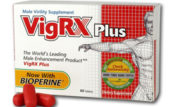If there is such a thing as a fountain of youth, growth hormone would be it. When we’re young, our bodies are lean. Our minds are sharp with a sex drive to match. Tissue regenerates with blazing speed, and new cells replace dead ones. During youth, the body grows. And growth hormone makes it happen.
Somatropin, or growth hormone, is a protein-based peptide that stimulates growth, cell reproduction and regeneration. Synthesized by the anterior pituitary gland, growth hormone is most abundant during youth. It’s growth hormone that strengthens bones and gives us height. You might associate growth hormone with steroids and performance enhancing drugs. There’s some truth to that. In modern times, growth hormone has been used as an anabolic agent, albeit as injections, and in high doses.
Growth hormone makes cells grow, tissue regenerate and keeps our bodies in peak form. Among other things, it’s responsible for:
- calcium retention and bone strength
- increased muscle mass
- protein synthesis
- functioning immune system
While production usually peaks in our early 20’s, growth hormone can be stimulated by lifestyle factors. Activities that stimulate growth hormone include deep sleep, fasting and intense exercise. Conversely, inhibitors of growth hormone include hyperglycemia, somatostatin, glucocorticoids and dihydrotestosterone, the latter three of which are hormones.
Regardless of diet or lifestyle, growth hormone production eventually tapers off in all human life. The process of aging occurs in large part from this decreased production. Effects include:
- reduced muscle mass
- baldness in men
- grey or white hair
- less bone mass, leading to osteoporosis
- reduced quality of life and energy levels
- loss of focus and memory
- increased body fat, especially around the waist
- heightened levels of LDL (the “bad” cholesterol)
While it’s inevitable that growth hormone production will decrease, a large and influential anti-aging industry exists and caters to the post World-War 2 baby-boom generation and seniors looking to turn back the clock with growth hormone treatments, including synthetic injections, hormone therapy and dietary supplements.
Originally conceived to increase height in children, injections of synthetic growth hormone have been available since the 1980’s and are a proven method to reduce the symptoms of aging. However, while effective, the cost of synthetic injections typically run between $10,000-$30,000 US Dollars per year, putting them beyond what most clients can afford.
In recent years, dietary supplements have come to the forefront of the anti-aging industry as an affordable and reasonably effective method to boost growth hormone production and reduce the effects of aging. While there is no shortage of dietary supplements, often labelled “HGH releasers”, such products typically lose most of their key ingredients in the digestive system and only 10-15% make it to the small intestine for absorption.
Recent developments among HGH releasers have improved absorption rates, and with them an increase in reported benefits. Enteric coating, for example, protects key ingredients from stomach acid and delivers 80-90% of content to the small intestine for maximum absorption. GenF20 Plus, one of the more popular HGH releasers, features enteric coating and an oral spray with Alpha GPC, which might also stimulate production of growth hormone.
While aging is an inevitable part of human life, new technologies and lifestyle habits have entered the collective conscious of a generation of baby boomers that own 80% of all financial assets and control more than 50% of discretionary spending. Time will tell whether developments in growth hormone production among this group will extend age and boost quality of life for future generations.




